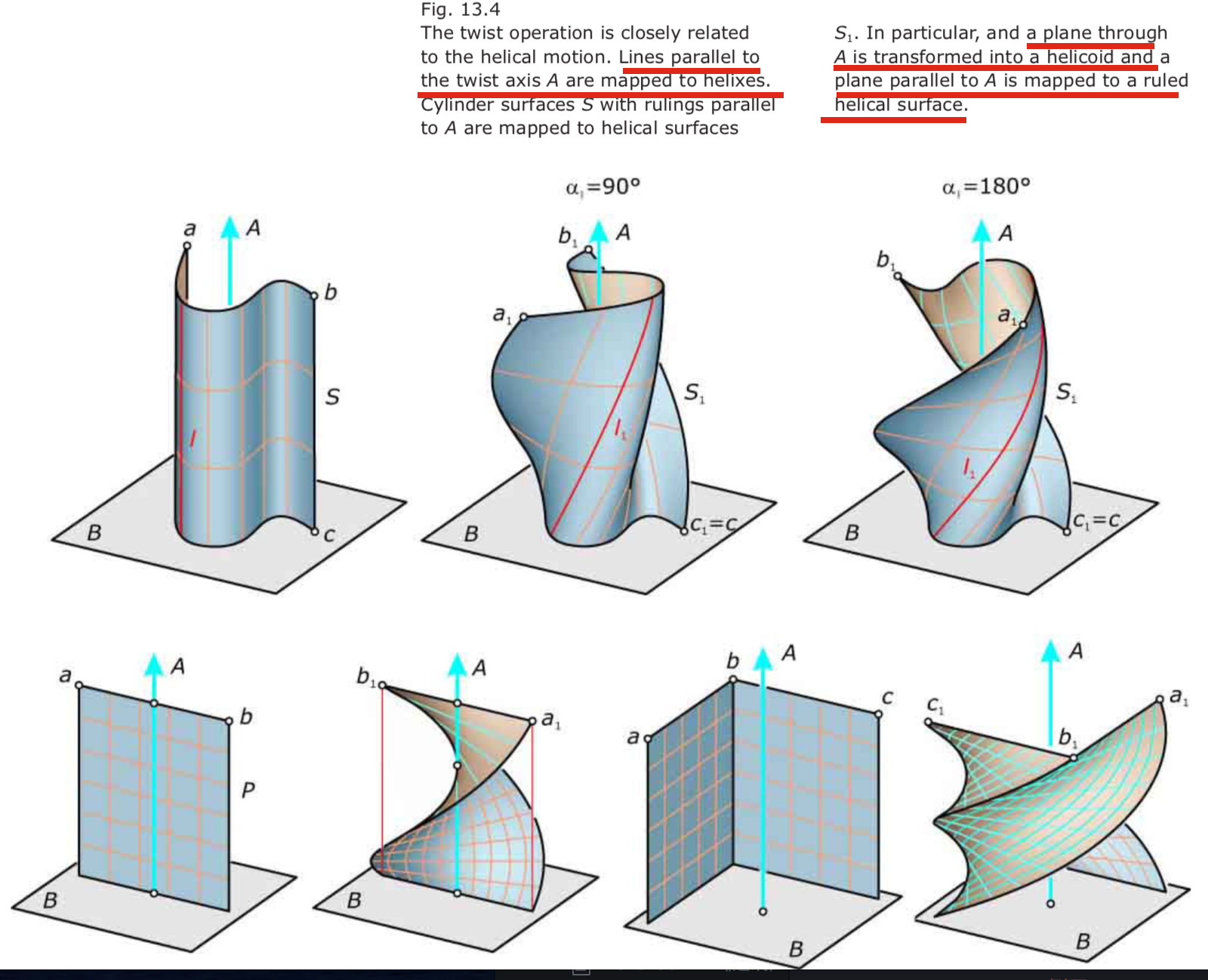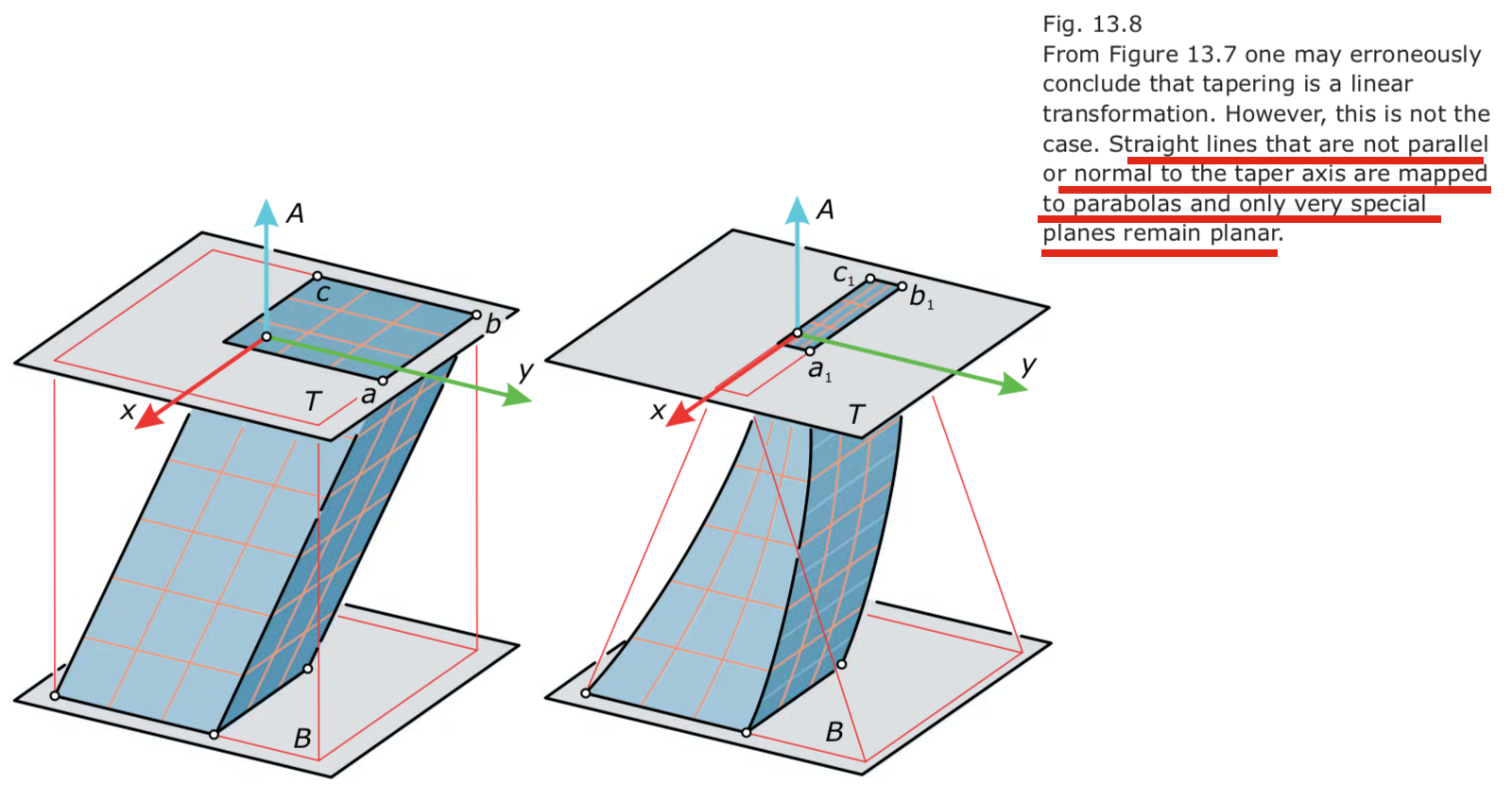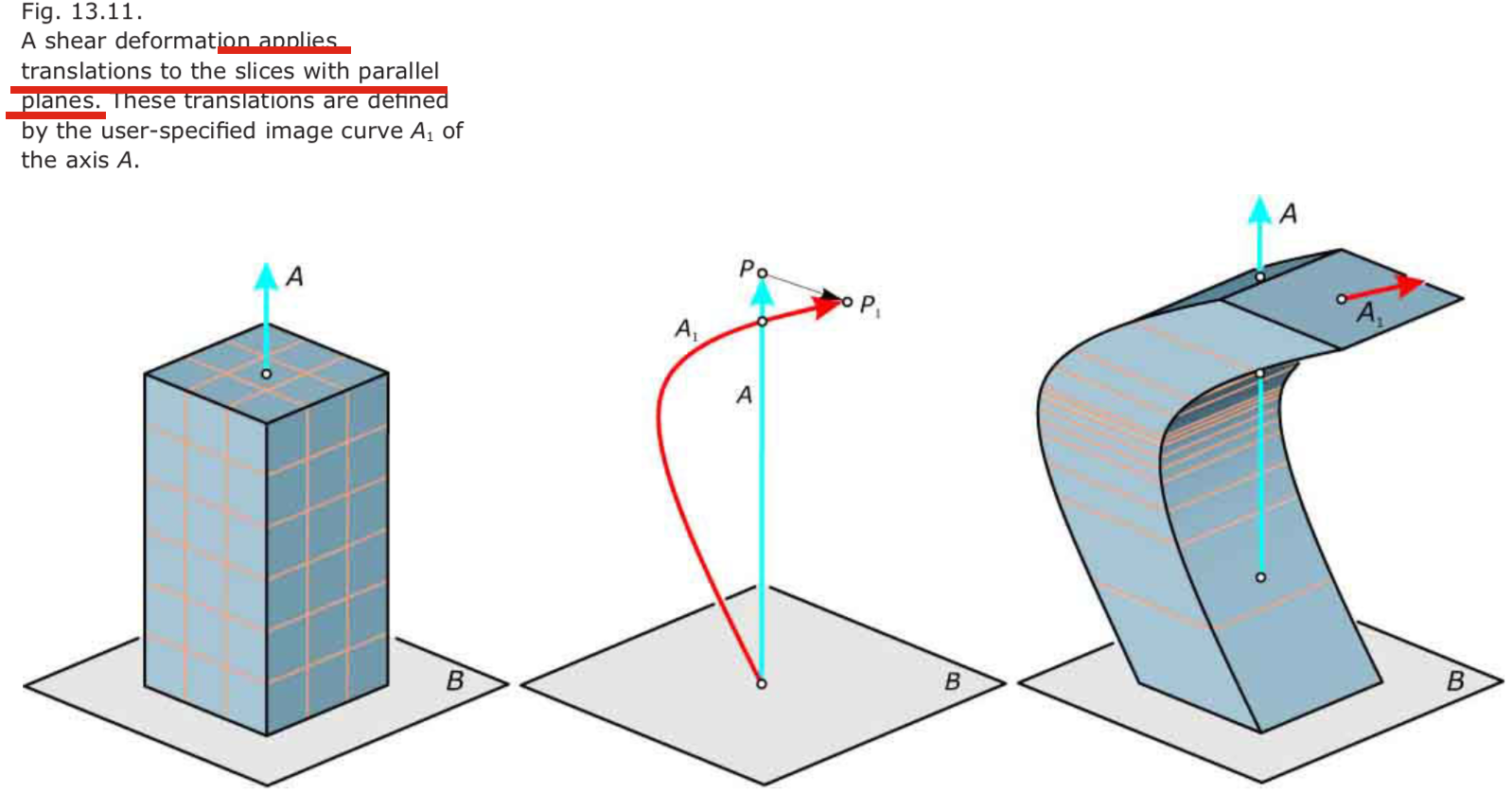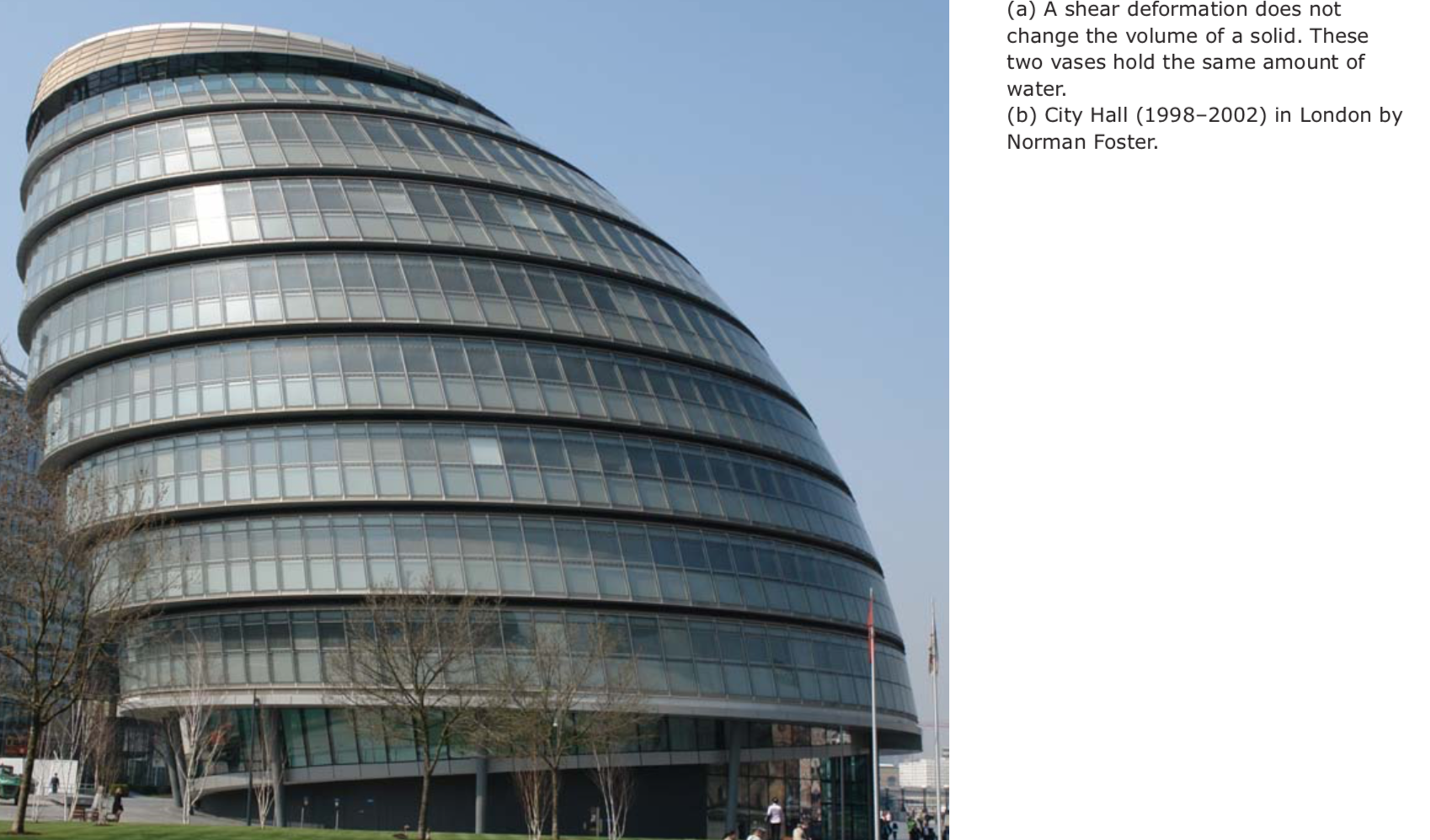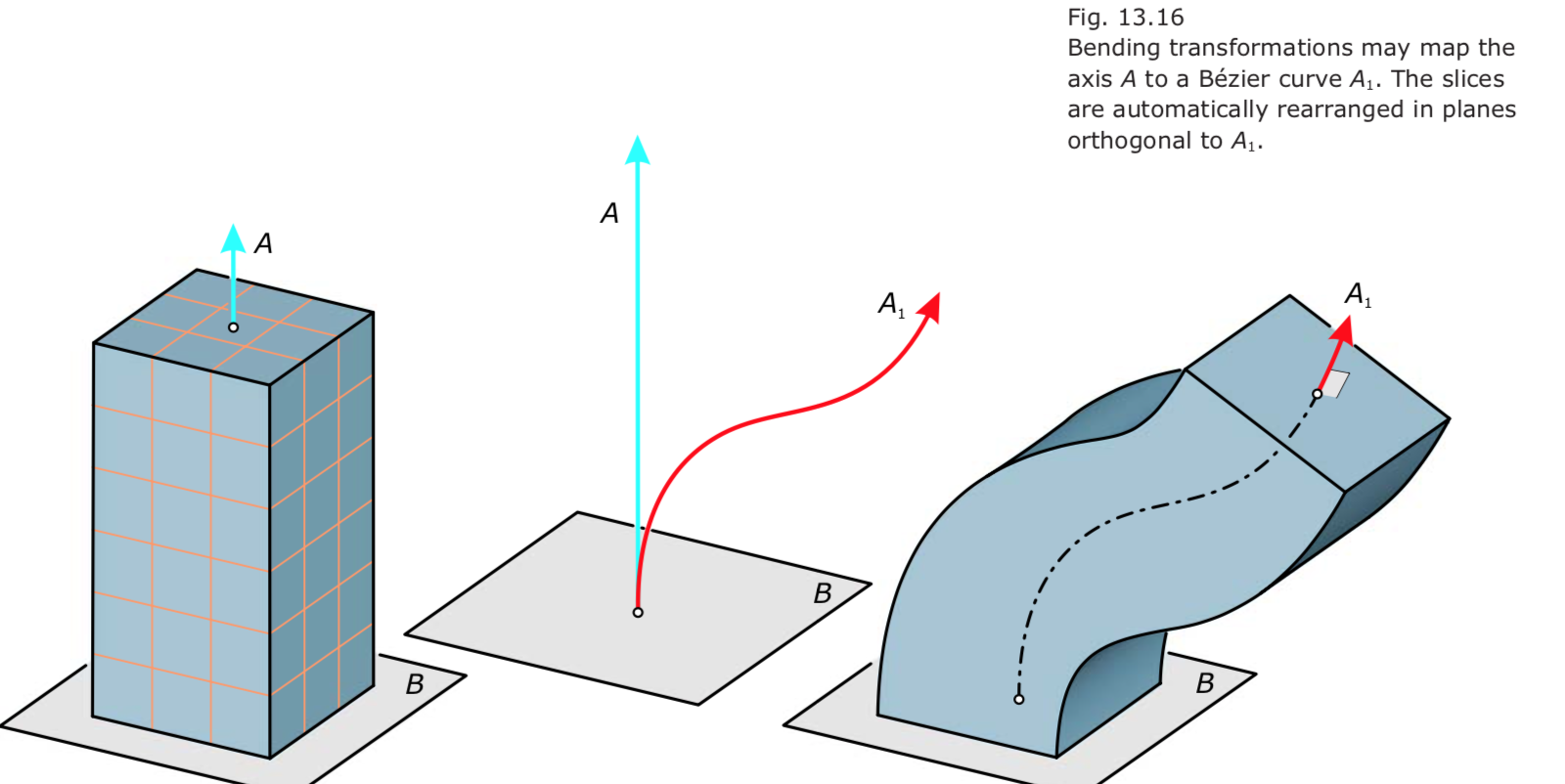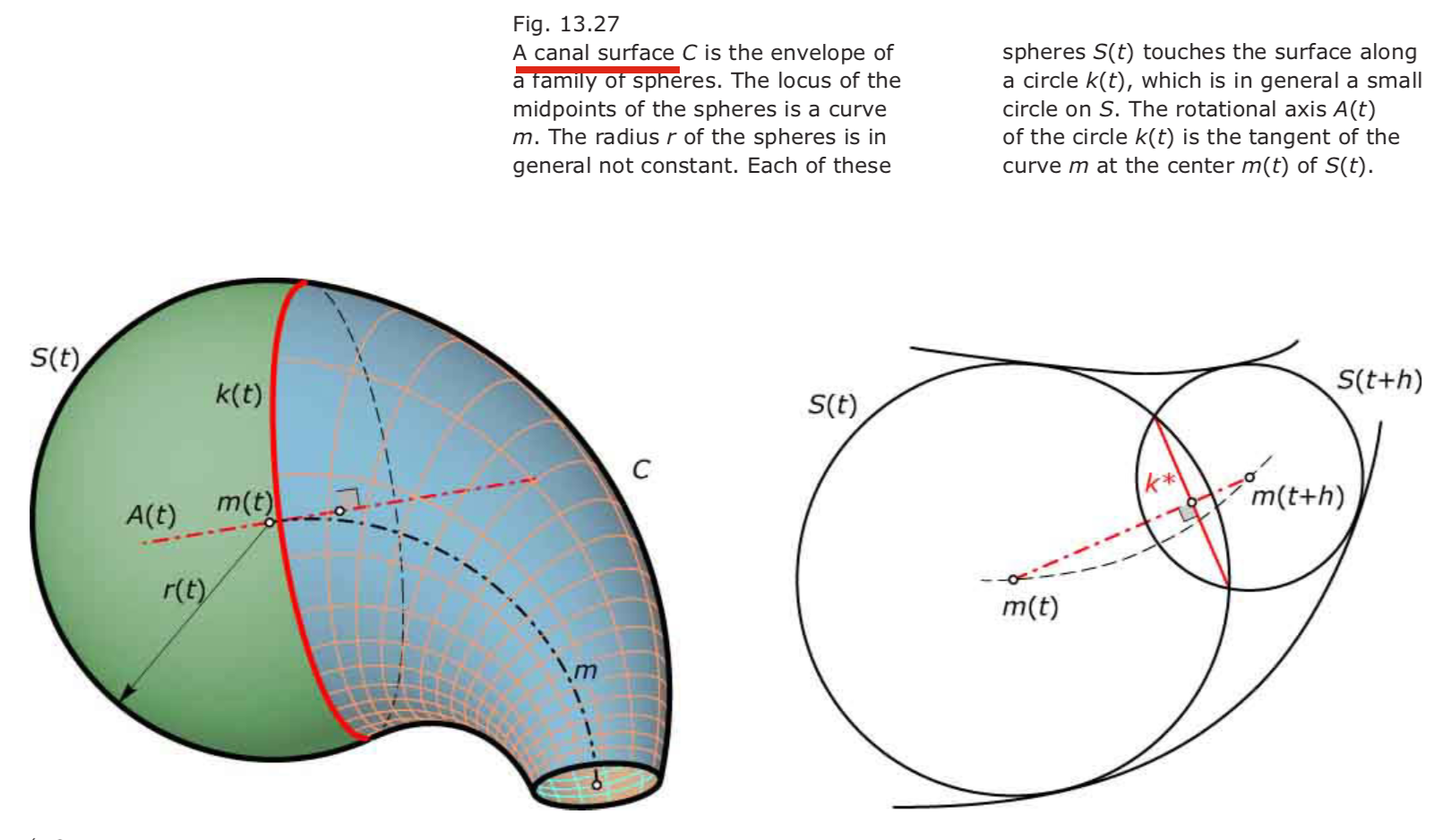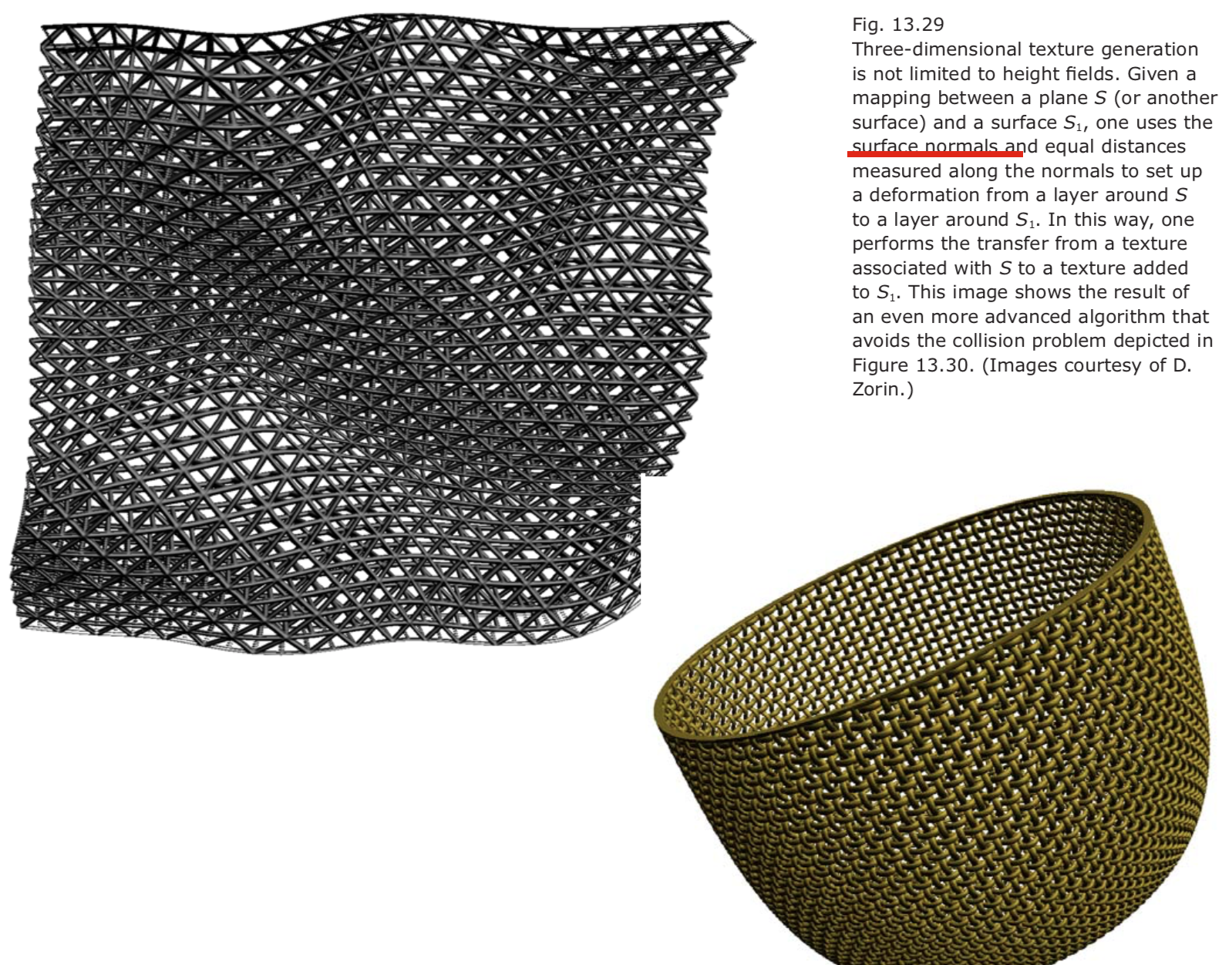Deformation 变形
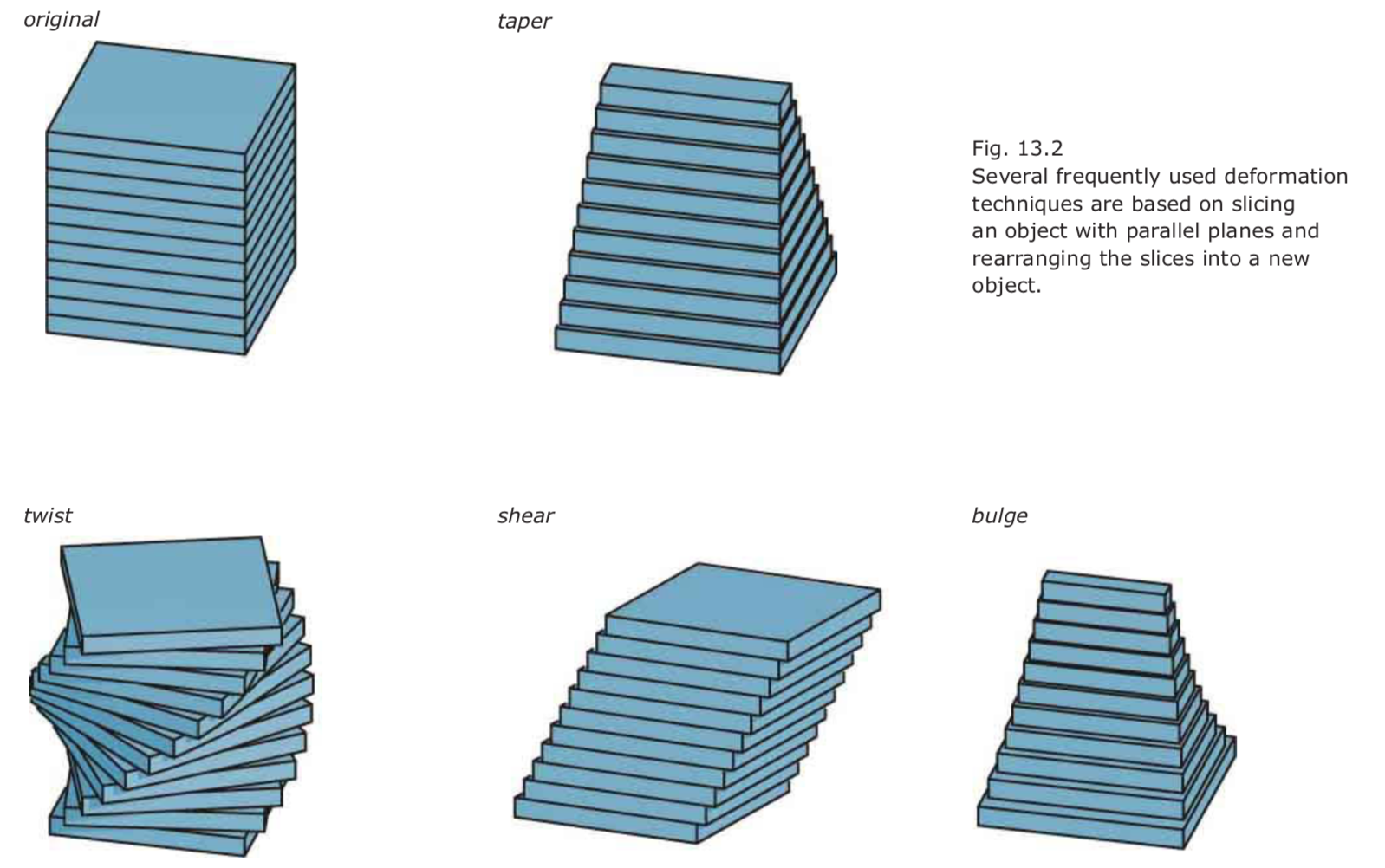
Three-Dimensional Transformations 3D变换
- Affine maps 仿射映射:
- 直线映射成直线
- 平面映射成平面
- 保直线和平面的平行性
- 不改变共线点比例
- Projective maps 射影映射:
- 直线映射成直线
- 平面映射成平面
- linear functions [f = (f0 + f1x + f2y + f3z)/D] with a common denominator D = d0 + d1x + d2y + d3z. if d1 = d2 = d3 = 0 (d0 ≠ 0) we have an affine map. Otherwise, d0 + d1x + d2y + d3z = 0 determines a plane V whose points are mapped to points at infinity.
- Nonlinear transformations
not all straight lines are mapped to straight lines
Twisting 扭曲
The bottom plane B remains fixed and the rotational angle αmax of the top plane T is prescribed. We assume that the distance between the bottom and top planes is h, the height of the object to be deformed. The rotational angle α(z) of the slice at height z above B is selected to be α(z) = (z/h) α_{max}.
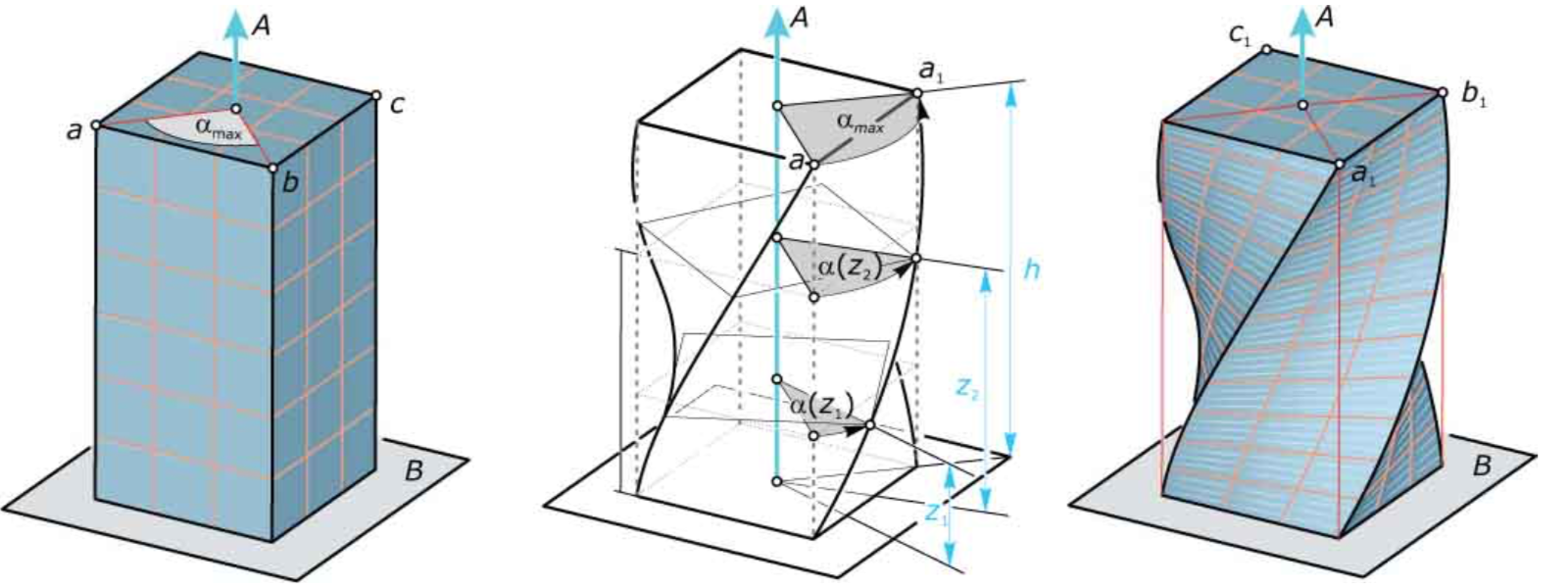
- interesting property of the twist operation is that it preserves the volume.
Tapering (~scaling)
- We select a reference plane B (say, the bottom plane) and an orthogonal axis A.
- All points of B and all points of A remain fixed under tapering.
- One then changes the object by scaling the slices in planes orthogonal to A (i.e., parallel to B).
- Tapering is not a linear transformation. It is a special quadratic transformation.
- Bulge. If one wants to have thickening or thinning effects without loss of smoothness, one can use a deformation technique sometimes called bulge.
Shear Deformations
- Shear deformations apply translations to the slices
- shear transformations are therefore volume preserving.
Bending 弯曲
- bending deformations that also change the orientation of the slices.
Freeform Deformations 自由形变换
- Planar Bézier deformations of degree (1,1).

Inversions 倒置
- The inversion with respect to a sphere maps
(a) straight lines to circles through the center o and
(b) planes P to spheres P1 through o.
(c) Spheres (which do not pass through o) are mapped to spheres and circles (not through o) are mapped to circles.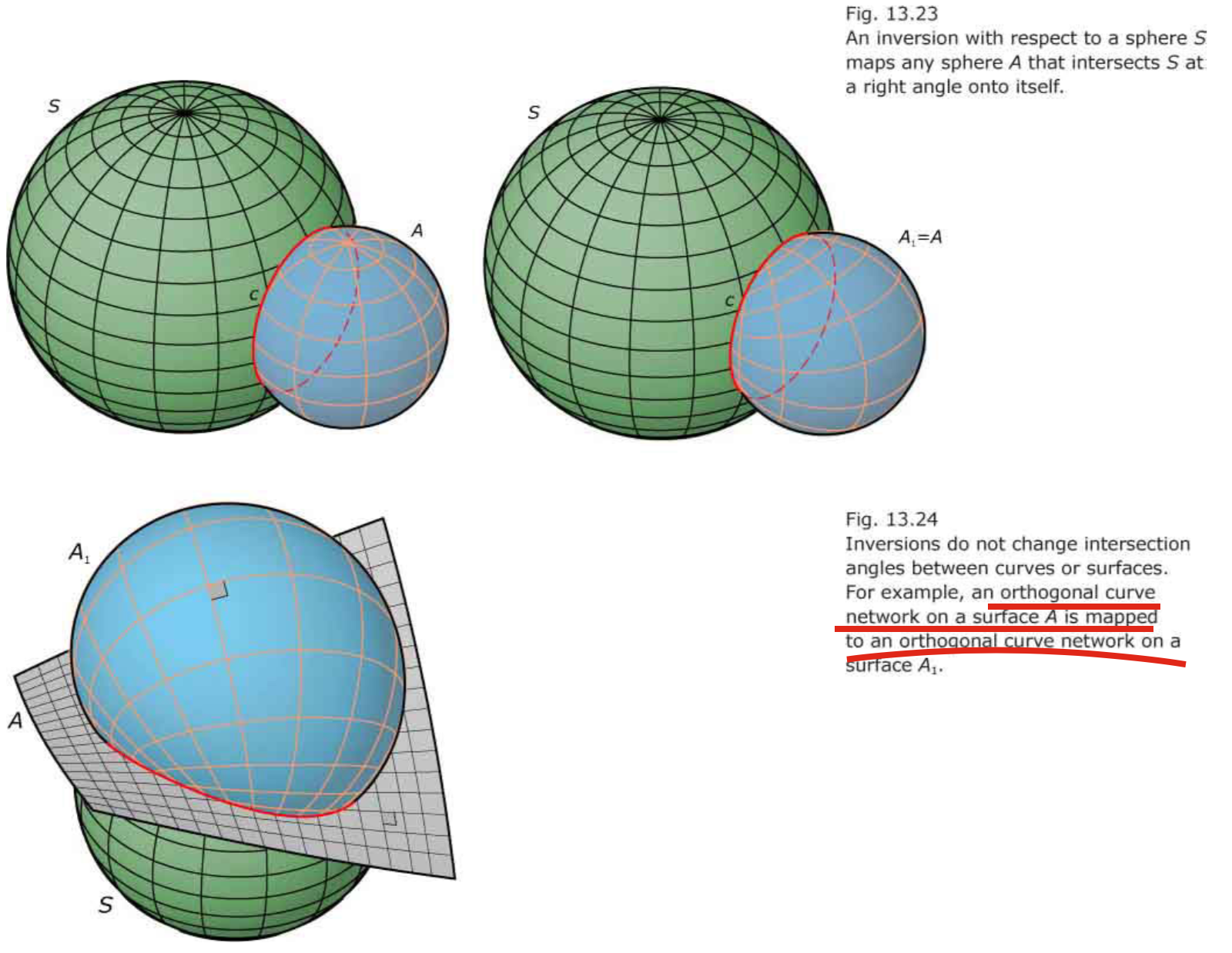
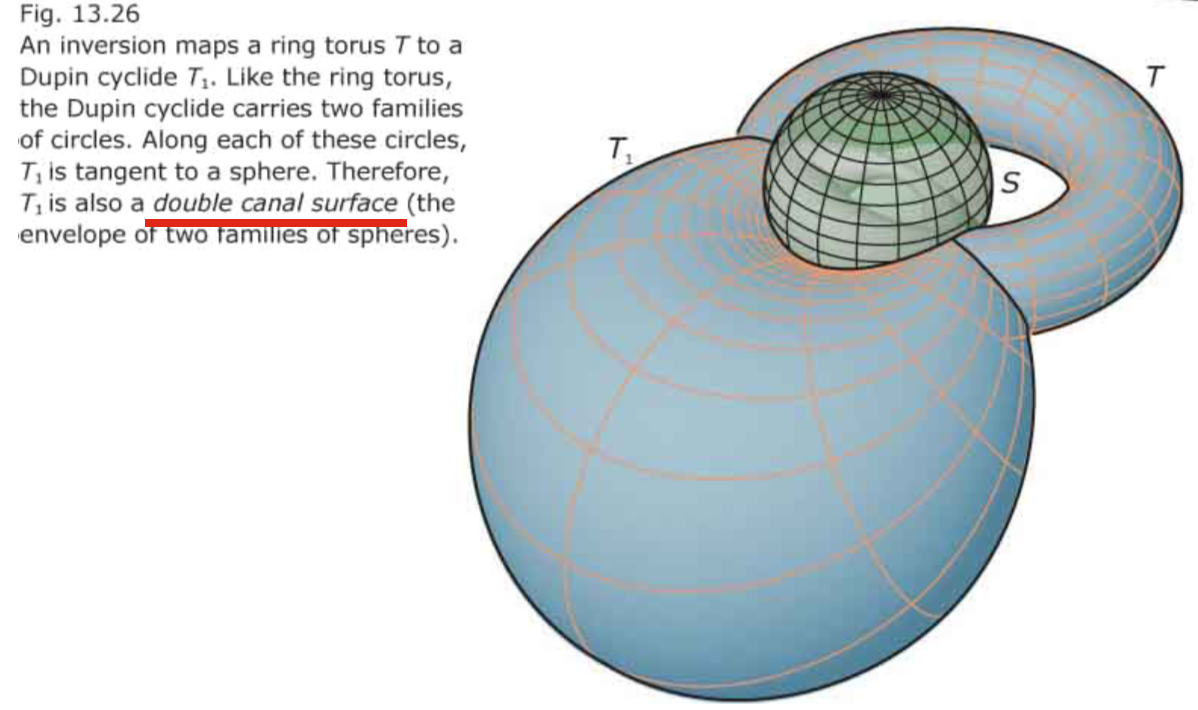
Three-Dimensional Textures 3D纹理
- One views a three-dimensional texture as a topographic surface [i.e., the graph surface of a height field, which associates to each point p1 of a surface S1 a height h(p1) of the texture].

